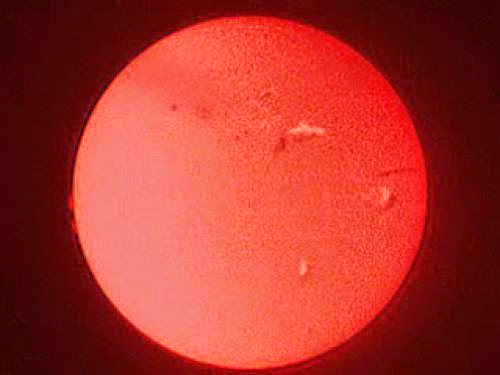The Sun: it's at its closest right now. Believe it or not, Earth is at a point in its orbit called perihelion or, in everyday language, the point in its orbit where it is closest from the Sun (okay, perihelion was 2 days ago, but it's close enough!). For many people who erroneously believe that the seasons are caused by the earth's distance to the Sun, this fact disproves this common misconception (at least for people living in the Northern Hemisphere) as January is often the coldest month despite the Earth being at its closest distance from the Sun.So, for people not familiar with the solar system, this fact leaves 2 big questions: how can Earth be at different distances from the Sun in a circular orbit and what causes the seasons? First, let's tackle the question about distance to the Sun.First of all, the planets' orbits are not circular at all, but elliptical. In geometry, an ellipse is a slightly elongated circle. Since the time of the Ancient Greeks, it was commonly assumed that the planets had to be in perfect, circular orbits. Unfortunately, a observing techniques were refined, it became obvious that the planets weren't exactly where they were supposed to be. However, it was not until Johannes Kepler in the early 1600s that it was realized that the planets do not orbit in circles, but in slightly elongated ellipses, hence why the Earth can be different distances from the Sun.Now, onto the seasons, if not for Earth's distance to the Sun, why do we have them?. Answer: it's all about Earth's tilt.If the Earth were spinning on its axis with no tilt at all, everyone would be treated to days of identical length every day of the year, with latitudes nearer the equator having longer days than those nearer the poles. However, with the tilt, the angle of the Earth relative to the Sun changes as or planet moves about its orbit. On the Winter Solstice (shortest day of the year) the Northern Hemisphere is tilted up and away from the Sun. On the Summer Solstice (longest day of the year), the Northern Hemisphere will be tilted down toward the Sun. On the equinoxes, the tilt is half way between the solstices. To see this effect, go out and observe the path the Sun takes through the sky for the course of day of winter.As seen on the Summer Solstice from the Cleveland area (where I'm from), the Sun rises in the Northeast, arcs into the Southern sky, peaking at a height of about 72 degrees at local noon (about 1:30pm), and then starts heading down to its set in the Northwest. On the solstice, the day will be over 15 hours long. Now, for people living at different latitudes, your numbers may differ with more Northerly dwellers seeing more extreme changes. For about a month after the solstice, you will notice that the rise/set points of the Sun hardly change, hence "solstice" from the Latin words "sol" and "sitre," literally, "Sun stands still."By early August though, the days start to shorten and the Sun is noticeably moving South, towards due West at sunset. The shortening of the days will accelerate until the Sun reaches the day of the Autumnal Equinox, where it will rise/set exactly due East/West. At this point, both day and night will be exactly 12 hours long. The Sun will never leave the Southern celestial hemisphere until the next Vernal Equinox (first day of spring).The shortening of the days will continue until the Sun finally reaches its most Southerly rise/set on the Winter Solstice, the shortest day of the year. On this day, the Sun will rise/set low in the Southeast, get only about 25 degrees high at local noon (in my location at about 12:30 thanks to a return to Standard Time). The final result: a day that is only 9 hours long.Now, by looking at these statistics, namely where the Sun rises, how high it climbs, and how long the days is, it is obvious to see that the angle of the Sun relative to Earth, not its distance, determines why we have seasons.HUMBLE REQUESTS:If you found this informative (or at least entertaining), help me pay my bills and check out my Examiner pages for space news, cleveland photography, national photography, and astronomy for more great stuff. If you think this was cool, why not tell a friend? For something even better, follow this blog.
Source: 33witches.blogspot.com

